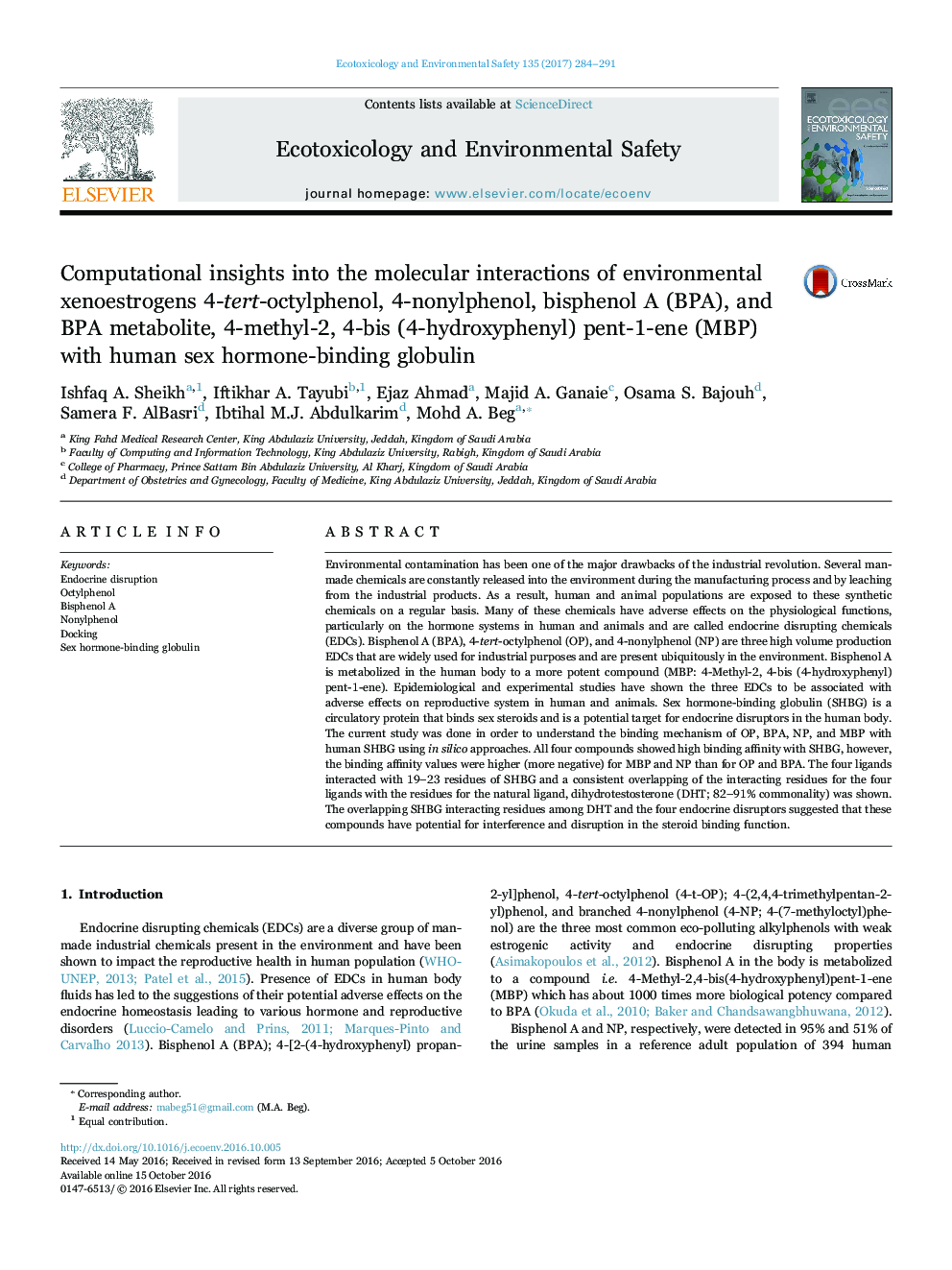| کد مقاله | کد نشریه | سال انتشار | مقاله انگلیسی | نسخه تمام متن |
|---|---|---|---|---|
| 4418982 | 1618929 | 2017 | 8 صفحه PDF | دانلود رایگان |
عنوان انگلیسی مقاله ISI
Computational insights into the molecular interactions of environmental xenoestrogens 4-tert-octylphenol, 4-nonylphenol, bisphenol A (BPA), and BPA metabolite, 4-methyl-2, 4-bis (4-hydroxyphenyl) pent-1-ene (MBP) with human sex hormone-binding globulin
دانلود مقاله + سفارش ترجمه
دانلود مقاله ISI انگلیسی
رایگان برای ایرانیان
کلمات کلیدی
موضوعات مرتبط
علوم زیستی و بیوفناوری
علوم محیط زیست
شیمی زیست محیطی
پیش نمایش صفحه اول مقاله

چکیده انگلیسی
Environmental contamination has been one of the major drawbacks of the industrial revolution. Several man-made chemicals are constantly released into the environment during the manufacturing process and by leaching from the industrial products. As a result, human and animal populations are exposed to these synthetic chemicals on a regular basis. Many of these chemicals have adverse effects on the physiological functions, particularly on the hormone systems in human and animals and are called endocrine disrupting chemicals (EDCs). Bisphenol A (BPA), 4-tert-octylphenol (OP), and 4-nonylphenol (NP) are three high volume production EDCs that are widely used for industrial purposes and are present ubiquitously in the environment. Bisphenol A is metabolized in the human body to a more potent compound (MBP: 4-Methyl-2, 4-bis (4-hydroxyphenyl) pent-1-ene). Epidemiological and experimental studies have shown the three EDCs to be associated with adverse effects on reproductive system in human and animals. Sex hormone-binding globulin (SHBG) is a circulatory protein that binds sex steroids and is a potential target for endocrine disruptors in the human body. The current study was done in order to understand the binding mechanism of OP, BPA, NP, and MBP with human SHBG using in silico approaches. All four compounds showed high binding affinity with SHBG, however, the binding affinity values were higher (more negative) for MBP and NP than for OP and BPA. The four ligands interacted with 19-23 residues of SHBG and a consistent overlapping of the interacting residues for the four ligands with the residues for the natural ligand, dihydrotestosterone (DHT; 82-91% commonality) was shown. The overlapping SHBG interacting residues among DHT and the four endocrine disruptors suggested that these compounds have potential for interference and disruption in the steroid binding function.
ناشر
Database: Elsevier - ScienceDirect (ساینس دایرکت)
Journal: Ecotoxicology and Environmental Safety - Volume 135, January 2017, Pages 284-291
Journal: Ecotoxicology and Environmental Safety - Volume 135, January 2017, Pages 284-291
نویسندگان
Ishfaq A. Sheikh, Iftikhar A. Tayubi, Ejaz Ahmad, Majid A. Ganaie, Osama S. Bajouh, Samera F. AlBasri, Ibtihal M.J. Abdulkarim, Mohd A. Beg,